Yachting World
- Digital Edition


Catamaran sailing across the Atlantic: Why multihulls are taking over the ARC
- Elaine Bunting
- July 2, 2020
Multihulls are making their mark on tradewinds sailing. Elaine Bunting reports from the 2019 Atlantic Rally for Cruisers

A catamaran on the ARC rally reefed for an approaching squall, as seen from Jeanneau 64 Layla. Photo: Paul Laurie/Point Photography
Something big has happened in ocean sailing. It could be the tipping point in the 34-year history of the Atlantic Rally for Cruisers , when multihulls move from minority element to ruling party.
When a cruising catamaran sailed by four people in their sixties can beat a larger one-design round-the-world racer with a crew of 15, and many even bigger, you realise something has changed – maybe for good.
Just after midnight on 7 December 2019, Régis Guillemot, his partner Véronique, and two friends fizzed across the finish line in St Lucia in Guillemot’s 55ft cruising catamaran, Hallucine . It had taken them just 11 days and 16 hours.

Celebrations as the four crew of Hallucine , a Marsaudon TS5 catamaran, crosses the finish line at Rodney Bay, St Lucia. Photo: Tim Wright / PhotoAction
“Our boat is very quick, very simple and fast, and we are optimised for light weight,” explains the quietly spoken French sailor. His other half just laughs. “For him, there is full speed ahead, or nothing!”
Hallucine had sailed from Gran Canaria at an average of 12.5 knots, while the crew did Pilates on the aft deck each day, baked bread and shot GoPro videos.
Around 10 hours later came Sisi , a VO65 from the Austrian Ocean Race Project crewed by 12 Slovenian charter sailors and three professionals.
What a different experience: faster sailing but a course of long gybes, on a diet of freeze-dried food, no showers and hot-bunking in the round-the-world racer’s dark carbon recesses.
Astern of them both was top French solo sailor Jean-Pierre Dick’s The Kid , a 54ft carbon composite canting keel yacht designed as a performance cruising interpretation of IMOCA 60 principles.
Article continues below…

Tradewinds explained: Everything you need to know before sailing across the Atlantic
A transatlantic tradewind crossing from the Canary Islands to the Caribbean is on many a sailor’s bucket list. Endless sunny…
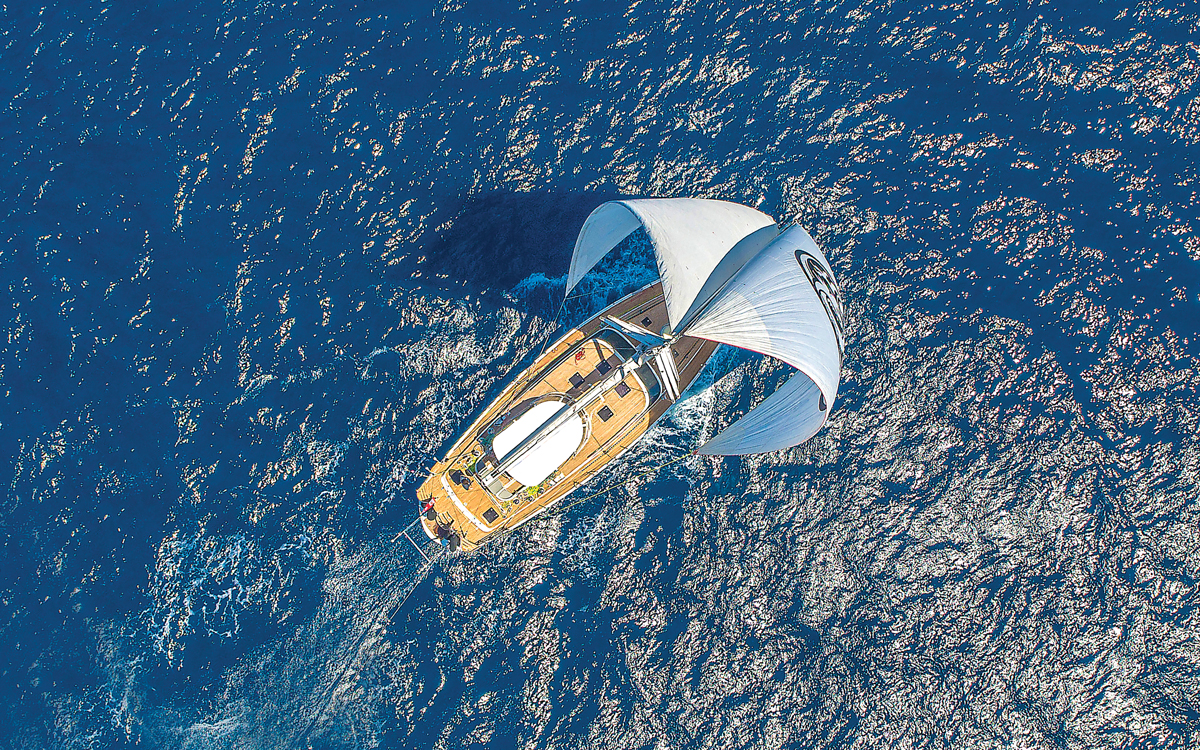
Sailing across the Atlantic: Bluewater veterans share top tips for your first crossing
On the afternoon before we left the Canary Islands for the Caribbean for a transatlantic with the ARC, I struck…
Hallucine would also have beaten Ulisse , Patrizio Bertelli’s 105ft Frers superyacht , had it not diverted to another island on the final approach following a crew injury.
In the ARC+ rally, too, the route that goes via a pitstop in the Cape Verde Islands, the first to arrive in St Lucia was also a multihull, the Neel 47 trimaran Minimole .
Cruising multihulls numbers have been growing quickly. Of the 280-strong fleet in 2019, 60 were multis. But the most telling statistic is that they make up 50% of all the new boats.
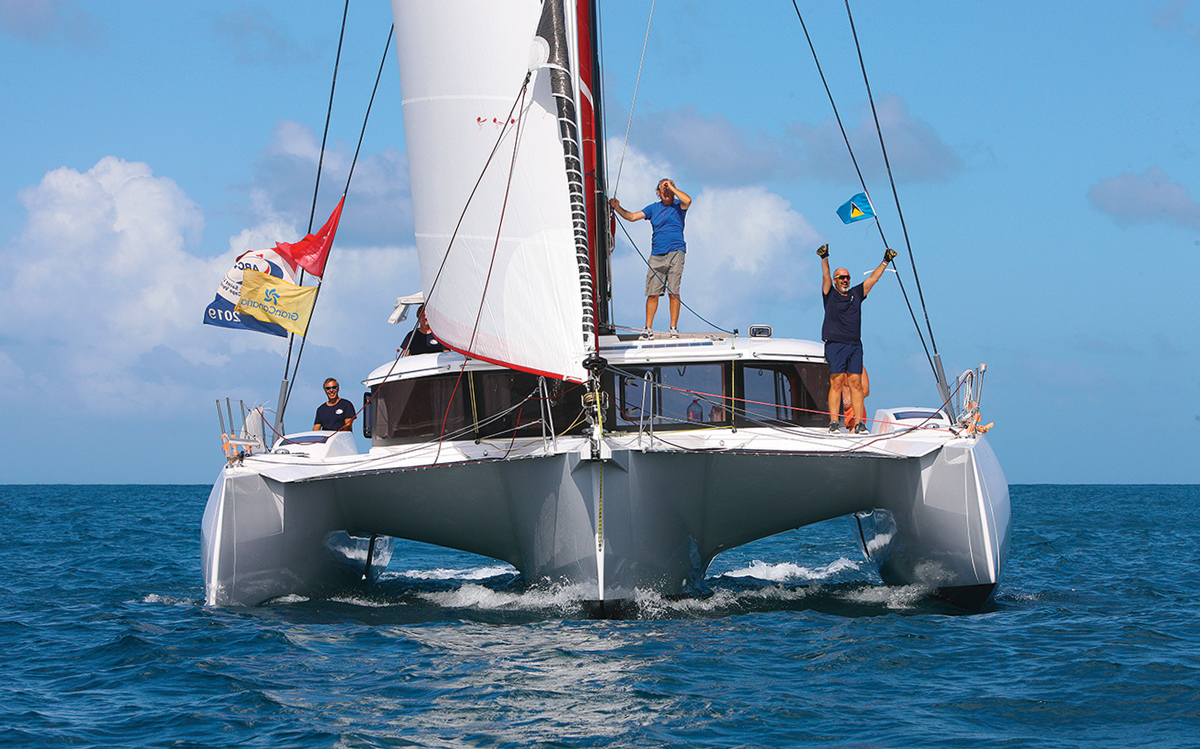
The crew of Neel 47 trimaran Minimole celebrate arrival in St Lucia 12 days after leaving Mindelo, Cape Verde. Photo: Tim Wright / PhotoAction
The crossing times are incontrovertible evidence that performance cruising multihulls and cruising catamarans designed foremost for spacious living can, if sailed well, be faster downwind than a monohull with a longer LOA.
Of course, what makes the ideal yacht for an upwind passage (for example, the return crossing to Europe) is quite a different matter, but more and more cruisers are planning only a one-way voyage and intend to ship their boats back, or are planning to sail onwards into the Pacific along the tradewinds route. This is a trend that is only going to continue.
Fast, light, simple
In one way, the line honours winner’s story is exceptional. For many years skipper Régis Guillemot ran a charter business in Martinique.

Hallucine ’s anti-capsize system: Two cam cleats flip up to release genoa and spinnaker sheets if settings are exceeded
He is also an experienced racer, cousin of the French round the world sailor Marc Guillemot, and a three-times Route du Rhum competitor.
His Marsaudon TS5 is a lightweight cruiser with a carbon mast and deck, It displaces just 8.6 tonnes, and Guillemot keeps it light.
“It’s not too complicated,” he says. “We have a small 27lt per hour watermaker, solar panels, no generator and we don’t carry too much fuel or water. We set off with only 30lt of water per side, plus emergency water in bottles, and made water every day.
“I want to go fast. We can be sailing at 17 knots and sitting there comfortably having our coffee. And in the Caribbean the size [of the boat] is no problem: there’s more space, it’s cooler and less rolly in anchorages.”
And although the boat is light, it does carry scuba gear and a kitesurfer that they plan to use in the Caribbean and as they make their way across the South Pacific next year.
Guillemot ran single watches and sailed almost all the way with a full main and heavy A2 spinnaker. “We took it down at Pigeon Island after 11 days just to tack to the finish,” he says. They were able to gybe through 145-150° and were making 17-20 knots – “usually 17-18 knots steady”– as soon as they reached the tradewinds.

The kill cord in Hallucine ‘s saloon
In the few squalls they encountered, the wind never topped 17 knots apparent and they felt comfortable enough to keep the full main up and soak down by 10° until a squall passed. To help make sure they never pressed the boat so hard they risked capsize, Guillemot has an automatic sheet release system similar to those used on the huge Ultime trimarans.
Made by ACR, this monitors pitch and heel angle and is set to release the main and spinnaker sheet from a panel of cam cleats once certain settings are reached, and also set off an audible alarm. There is also a kill cord in the saloon. It’s a very simple system.
The yacht’s autopilot can, he says, handle speeds up to 24 knots, but for the last five days the crew hand steered all day. The boat is steered from the aft quarters with tillers, and the video above shows some of the speeds they were enjoying.

The ACR unit senses pitch and heel angle
But although Hallucine ’s crossing was super-fast, another Marsaudon catamaran provided a second benchmark. Fifth over the line was a TS42, Elektra , a 42ft smaller sister from the same French builders, which made the crossing in just under 13 days. They, too, left bigger boats astern – 10 hours behind her was a Swan 80.
Elektra ’s crew had sometimes reefed during the night and may represent a more typical example of sensible catamaran cruising because, as even Régis Guillemot admits: “They are like sportscars – when they go, they go,” he says. “There’s a limit and if you don’t know what you are doing, you can quickly go into the red zone.”
The crossing times of these big multis is a clear sign of an evolution in performance and speed. “I think you can’t necessarily judge all boats by Hallucine ’s performance, but what is interesting is how they are holding pace with larger monohulls,” says World Cruising Club (WCC) communications director Jeremy Wyatt.

View from aloft on Pierre Caouette’s and Lisa McKerracher’s Outremer 5X Biotrek
“A 55ft Bali was holding up with an X-61, which is a fast monohull, and if you pick out comparable elapsed times and distances sailed you can see that a Lagoon 42 is going the same speed as a 46ft Bavaria and significantly faster than a Discovery 55, if you’re sailing them well and getting the best out of them.
“Multihulls are more expensive to buy, more expensive to run and you have to remember that if the beam is over 8m you could be restricting yourself as to where in the world you can be lifted out.
“But for tradewinds sailing there’s a strong argument that they are the right choice and the ability to live your life without any sense of camping is the biggest win-win
“But,” he adds, “go on a performance sailing course first, would be my advice.”
South til the butter melts
Kevin Horne and his partner, Diane, are steadfast monohull sailors. The Australian skipper has a distinguished background in offshore racing with the well-known Aussie yacht Wild Thing , and was sailing in a crew with several professionals including round the world Clipper Race winner Wendy Tuck .
He bought his Jeanneau 51 Wild Spirit in 2018 and had been cruising in the Mediterranean , but is now sailing his way back home.

The crew of Wild Spirit (L-R): Kevin Horne, Diane Rogers and Russell Finch
Horne was taking part in the ARC+ rally – he liked the idea of a stop on the way across and was hugely enthusiastic about the visit to Cape Verde.
He too had an uncomplicated sailplan in action for the crossing: full main and asymmetric, and between Mindelo and St Lucia made “one gybe to the north and one down” to go as deep downwind as possible. They had daily runs of 160-180 miles, with one day over 200, hand-steered “80-85% of the time”.
“The boat was outstanding,” he says. “Our water tanks and fuel tanks were full at the start and we had two weeks of food, so a lot of weight, but the boat helmed beautifully and tracked along. We took the tender and outboard off, and the anchor and chain were stowed over the keel to centralise weight. The boat was stunning and it really was brochure sailing.”

Seas in the wake of Yolo , Gottfried Boehringer’s Oyster 625
This was a year for heading south until the butter melts, avoiding light winds along the rhumb line by following the classic route south towards Cape Verde where early tradewinds begin and turning right for St Lucia.
This is typical a VMG running course, and those yachts such as the VO65 that were running down hot angles had to sail many hundreds more miles that cost them dearly.
Sisi , the VO65, for example, logged 3,950 miles (one of the highest I’ve heard of in years of ARC coverage). For added context, Bouwe Bekking was also sailing a VO65 in the RORC Transatlantic Race between Lanzarote to Grenada, and he too reported sailing around 4,000 miles.

Fast, wet downwind sailing on the VO65 Sisi . Photo: Austrian Ocean Race Project / Michael Muck Kremtz
Yachts able to sail deeper downwind at angles up to 170° are much better set up for this route. The old racing adage that ‘the shortest distance is invariably the fastest’ holds true on the transatlantic.
The southerly route adds around 300 miles compared to the rhumb line distance of 2,700 miles. That can be made back if avoiding light winds on the direct route, but reaching machines with no angles to play are not going to break any records.
This year the trades began gently and built steadily until yachts were seeing 20-25 knots and positively barrelling down westwards.

Exhausted crew at the stern of the VO65 Sisi . The crossing was a full-on racing exercise, and hard, intensive work. Photo: Austrian Ocean Race Project / Michael Muck Kremtz
A common complaint was that life on board was very rolly. Many crews found the motion of building seas and fast sailing an unpleasant surprise, making daily tasks and sleeping quite hard work.
These conditions put boats under strain, and cause breakages. “But it’s really what we would expect, given the strength of the wind,” comments WCC’s Wyatt. “Wear and tear on steering cables, broken goosenecks… That is par for the course.”
Two crews reported bone fractures on board: one person broke an arm during a gybe that went wrong. This was likely because of the strong tradewinds, which made boats roll more.

Szabi Mohai and his Hydrovane
Szabi Mohai, sailing on a Dutch entry, a Bavaria 49 named Wilson , entered the finish at Rodney Bay steering gingerly with an emergency tiller. The boat’s rudder blade had broken four days earlier.
“It was the middle of the night and very dark when we had a crash and heard a loud bang, and when we looked back we could see [the remains of] the blade in the water.”
The boat momentarily came to a halt; Mohai realised they had hit something. The collision left only a little of the foam filling around the web structure from the stock and they were unable to steer with it.
Happily, Mohai has a Hydrovane, which operates with its own rudder blade and is equipped with a stub handle for a tiller, so the crew was able to use this to control the boat. “That really was our best friend,” he says.
The crew had also broken the bowsprit in rough weather at the start of the rally, when the bow buried in a wave and a fitting holding the anchor failed.
The anchor shot up and sheared off the aluminium prodder. The crew lashed the remaining part back in place with a cat’s cradle of lines, as shown below.

Repairs to his broken bowsprit
A few boats had encounters with so-called ‘ghost’ fishing nets. One yacht had part of a net entangled on the keel. Another reported passing a very large ghost net that they estimated to be around 50m x 20m in size.
Some of the crews we spoke to were disappointed they had seen very little marine life. Yet others photographed pods of dolphins, reported catching mahi mahi or seeing longtails, so perhaps these sightings were more common on boats where people were handsteering or on yachts without large biminis and sprayhoods?
At least three crews from the ARC+ reported nighttime encounters with other yachts that were unlit. These were not rally boats and did not appear on AIS.

Dolphins play at the bow of Jeanneau 64 Layla . Photo: Paul Laurie / Point Photography
With lower energy LED nav lights available and modern solar panels able to provide a steady supply of energy, it is hard to understand or excuse.
While the inexorable rise of the cruising catamaran is a very visible trend in bluewater sailing, it is not the only sea change. Another fast-growing movement is the business of vlogging.
Dozens of ARC crews, at least, are dabbling in video diaries and mini documentaries for a wider audience and a handful have followings large enough to monetise through YouTube and provide useful income.
Canadian sailor Lisa McKerracher, who is living on board their new Outremer 5X Biotrek with her partner Pierre Caouette and their labradoodle dog Tiller, is new to the game and began making video diaries for family to follow.
She is seeing an increasing following for her insights into the boat and life on board (the channel is called Biotrek-sailing ). Access to fast 4G/LTE wifi in Europe and through most of the Caribbean islands, and Wi-Fi in most cafes and restaurants has changed how people share their experiences and is giving a huge new audience with less or no sailing experience an enticing glimpse into what life on board entails.

Ross Applebey (centre) and crew of Scarlet Oyster celebrate Ross’s fourth racing division win, the third consecutively. Photo: Clare Pengelly / World Cruising
In reality, life on passage is testing. Says skipper Szabi Mohai, “there is something happening every day” – by which he means something to fix or add to the jobs list.
But it is a very different pace than on land, and with an Atlantic crossing comes the satisfaction of knowing that, with every mile covered, the hard part is receding.
First published in the February 2020 edition of Yachting World.
Your source for the latest news on yachts, boats and more. Read through our articles to find out how to compare boats and find the right fit for you!
The best catamarans for ocean sailing/crossing
Sep 25, 2020
less than a min
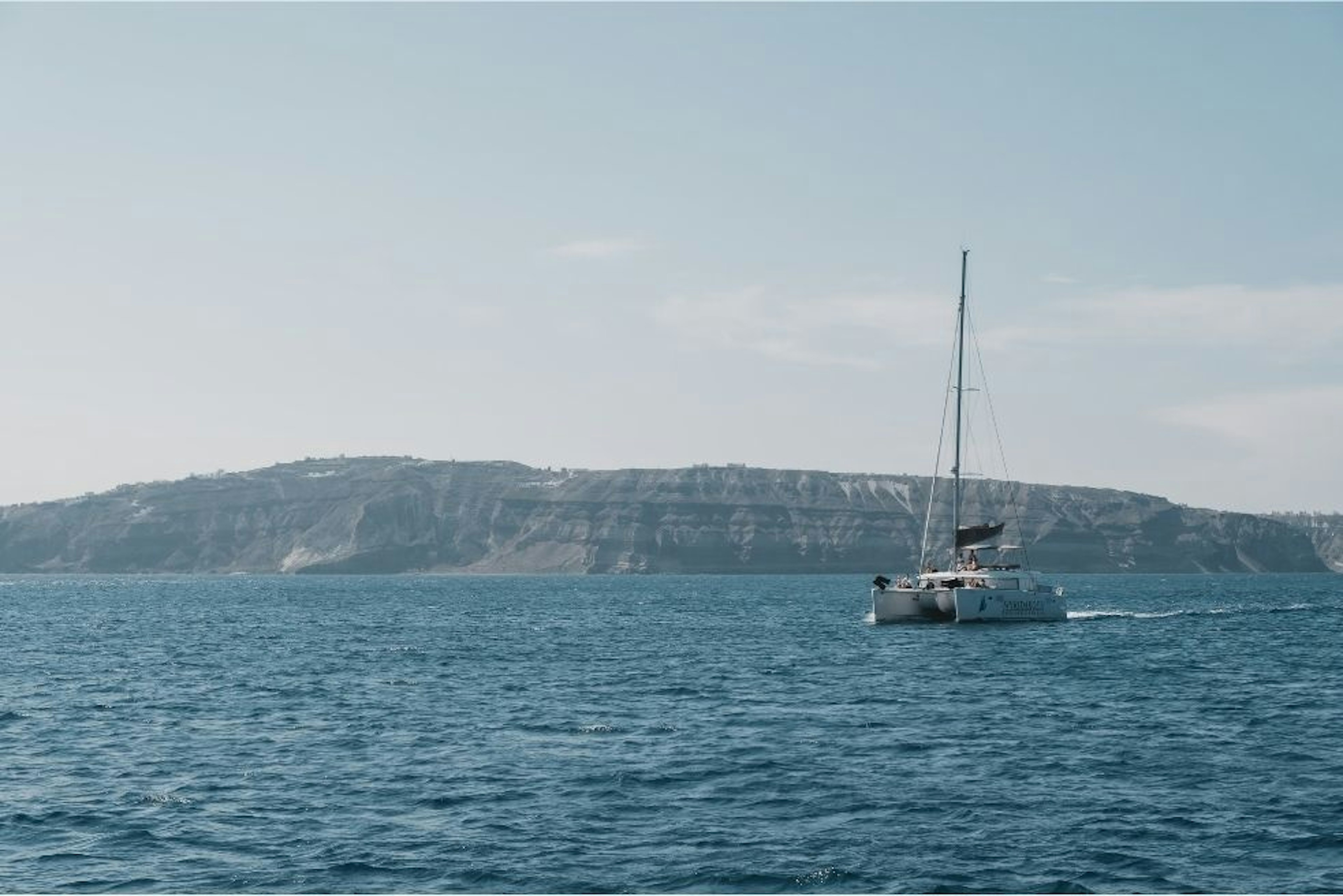
The best catamarans for ocean crossing have to embody a few key features in order to be safe for anyone on board, including guests and crew members. Most catamarans do perform quite well in open waters and are regarded as safe vessels to be offshore. This is especially true with large catamarans with big hulls.
In addition, many catamarans have sailed through horrific weather and have managed not to capsize due to their great roll inertia. What basically happens to a catamaran in a rough sea is the boat just surfs sideways when a big wave hits.
Not to worry however as in most cases, weather forecasts will determine whether a catamaran can go offshore on that specific day or not. In addition, the highest risks are when catamarans sail on a north- south axis between seasons. That said, there are a few catamarans that do perform better when crossing oceans than others.
Typically, cruising catamarans are divided into two categories:
- Charter Catamarans
- High-Performance Cruising Catamarans
Charter catamarans have fixed keels, shorter bows, forward masts, heavier displacement, high-windage flybridges, and low-aspect rudders. These boats are mainly chartered to guests and are not designed for ocean crossing rather than sailing close to shore and enjoying views in a touristic way.
High-performance cruising catamarans , on the other hand, have deeper rudders, less displacement, efficient daggerboards, a small weight and large sail plans. They are able to go at a 50-degree TWA to windward in all weather conditions, and can even outsail keelboats. In addition, when a storm hits, all that is needed is for the catamaran to sail at a higher speed and maintain balance and lower loads.
These features make them some of the best catamarans for ocean sailing.
Which is the best catamaran for ocean sailing
After getting a quick glance of what makes a multihull a good fit for offshore sailing, let’s get to the good part: which one is the best catamaran for ocean cruising ?
Technically, there are thousands of options to choose from when it comes to catamarans. So today we are going to present our choice based on the criteria mentioned above.
One of the best catamarans for ocean sailing in 2020 is The Privilege 435 . This is a long-distance, light weight cruiser produced in the Gold Coast area of La Rochelle. The Privilege 435 is a heavy-displacement multihull that has been around for almost 30 years. This is a luxurious well-built yacht with a decent proportion that allows it to cross oceans safely. It has a 23ft 2in beam, 43ft 1in LOA, as well as good proportion with a low-slung superstructure which is perfect for low wind resistance. In addition, the Privilege 435 is equipped with 4 cabins and 4 showers and costs about $300,000 to $350,000. The ample interior makes for a comfortable vessel to withstand long- distance trips.
While this catamaran sits on the high-end of the spectrum when it comes to yachts, there are many other more affordable options to choose from, if you are looking to sail offshore on a long-distance trip. Use TheBoatDB with a free account to compare other catamarans to the Privilege435 and figure out which one is the best fit for you to ocean cruise. You can even browse through TheBoatDB database to get some more options on the table. Last but not least, make sure to take into account the route and predicted weather conditions before embarking on your adventure.
You might like these too

Sailboat or Motorboat – Learn the pros and cons lg ...
Aug 24, 2022

Types of Catamaran Boats: Sailing, Power, and Luxury Catamarans lg ...
Feb 10, 2023

Which is better a wooden boat or fiberglass boat lg ...

What are the main types of sail rigs for sailboats lg ...

Which is the Best Economical Catamaran lg ...
Oct 04, 2021

What is a Chine on a Boat lg ...
Oct 01, 2021
Did You Know That We Offer Contract to Closing Services? Click Here to Find Out More.
Need Marine Financing? Apply Here With Our Partner, First Approval Source
- Catamaran Interviews
- Catamaran Reviews
- Buying Advice
- Selling Advice
- Woods Design Advice
- Americat 3014
- Aquila 44 Yacht
- Balance 526
- Bali 40 Catspace
- Beneteau Blue II
- Broadblue 346
- Broadblue 38 Prestige
- Broadblue 385
- Broadblue 435
- Broadblue 46
- Catalac 10M
- Catalac 11M
- Catalac 12M
- Catalac 900
- Catana 42 S
- Chris White 48 Voyager
- Chris White 55
- Corsair F28 R
- De Villiers
- Dolphin 460
- Endeavour 30
- Endeavour 35 Victory
- Endeavour 36
- Endeavour 44
- Endeavour 44 TrawlerCat
- Fortuna 36 Island Spirit
- Fortuna 401 Island Spirit
- FP 32 Maldives
- FP 35 Tobago
- FP 37 Antigua
- FP 38 Athena
- FP 39 Fidji
- FP 40 Lavezzi
- FP 40 Lucia
- FP 40 Summerland MY
- FP 41 Lipari
- FP 42 Astrea
- FP 42 Venezia
- FP 43 Belize
- FP 44 Helia
- FP 44 Orana
- FP 46 Bahia
- FP 46 Casamance
- FP 48 Salina
- FP 56 Marquises
- FP 57 Sanya
- FP 60 Eleuthera
- FP Saona 47
- Gemini 3000
- Gemini 3200
- Gemini 3400
- Grainger 420 Mystery Cove
- Hirondelle 7M
- Lagoon 37 TPI
- Lagoon 42 TPI
- Lagoon 43 PC
- Leopard 39 PowerCat
- Leopard 45 Classic
- Leopard 47 PowerCat
- Leopard 51 PowerCat
- Leopard 53 PowerCat
- Maine Cat 30
- Maine Cat 41
- Matrix 450 Vision
- Matrix 760 Silhouette
- Maverick 400
- Maverick 420
- Maverick 440
- Nautitech 40
- Nautitech 442
- Nautitech 46 Open
- Nautitech 47
- Outremer 40
- Outremer 45
- Outremer 50 Standard
- Outremer 55
- Privilege 37
- Privilege 39
- Privilege 42
- Privilege 43
- Privilege 435
- Privilege 45
- Privilege 465
- Privilege 48 Transcat
- Privilege 482
- Privilege Serie 5
- Prout 31 Quest
- Prout 33 Quest
- Prout 34 Event
- Prout 35 Snowgoose
- Prout 37 Snowgoose
- Prout 37 Snowgoose Elite
- Prout 38 Manta
- Prout 39 Escale
- Royal Cape 45
- Royal Cape 530 Majestic
- Royal Cape Majestic 500
- Sailcraft 30 Iroquois
- Sailcraft 32 Comanche
- Sailcraft 35 Cherokee
- Sailcraft 41 Apache
- Sailcraft 44 Apache
- Wildcat 350
- Seawind 1000
- Seawind 1160
- Seawind 1200
- Seawind 1260
- Seawind 1600
- Solaris 36 Sunrise
- Solaris 36 Sunstar
- St Francis 44
- St Francis 48
- St Francis 50
- Stealth 11.8
- Heavenly Twins 26
- Ocean Twins 38
- Voyage 380 Maxim
- Voyage 400 Norseman
- Voyage 430 Norseman
- Voyage 450 Cabriolet
- Voyage 47 Mayotte
- Wharram 38 Tiki
- AMI 320 Renaissance
- Woods 22 Wizard
- Woods 35 Banshee
- Woods 35 Flica
- Woods 36 Scylla
- Woods 36 Vardo
- Woods 38 Transit
- Woods 40 Meander
- Xquisite X5
- Xquisite X5+
Crossing the Atlantic Ocean on the Catalac 900 – S/V Horizons
- Post author By Rick
- Post date June 30, 2010
- No Comments on Crossing the Atlantic Ocean on the Catalac 900 – S/V Horizons

continued from page 1
by Jeff & Diane Curran
We were making good progress, averaging 90 miles but after 5 days the wind died and we were then faced with the prospect of grossly exceeding our ETA at Barbados. The last thing we wanted to happen was for our girls back in the UK to become worried because were unable to contact them or let them know in any way that we were ok (in fact, this became the greatest concern during the trip). In hindsight we should have invested in a SAT-phone for such an eventuality.
Actually, we set off with a five day weather forecast and with only VHF aboard, called up the occasional passing ship for an up to date forecast.
We deployed the Cruising Shute, something we thought would never be needed for this passage, particularly as the Trade Winds should have been firmly set for the time of year. At one stage it flew for nearly two and a half days continuously. This was contrary to our plans as we had always intended to shorten sail before sunset. In all, we had the cruising chute up for 13 days although not continually. We purposely bent on the working jib before setting off.
The usual pattern was for the winds to increase before lunch and start to die off before sunset which caused us no end of grief in the tropical heat as the sail plan was often changing and it often became frustrating as we saw the day’s average speed steadily drop off. When there was actually wind, the normal sail plan was jib and main or partly furled mainsail (we favoured a working Jib to a Genoa).
Luckily for us, we had SCRABBLE aboard which often saw us through these times when the weather couldn’t quite make up it’s mind.
Within a couple of days, the bread which we had purchased was mouldy and within a week and a half all the fresh vegetables had seen better days, Cape Verde isn’t the best place in the world to victual for an Ocean Crossing, much of the fruit and vegetables are well below par of the supermarket produce in European Countries. There wasn’t any part baked vacuum sealed bread or bread mix either which would have helped us on our way; instead we purchased packets of what looked like ship’s biscuits which on trying were hard as nails and even after soaking for a few hours still had a consistency of chewing cardboard.
But we got by, it was amusing with what we tried to concoct in order to make the dishes more appetising – eggs kept well, we decided early on that it was pointless trying to use the refrigerator as it used up too much energy, the priority was for keeping the power available for the autopilot and chart plotter .
On a few occasions we ran the engines – when there was absolutely no wind. The concern was that with 2 x 10hp Volvo sail drives and 50 ltr tanks for each and a reserve of 65 ltrs in jerry cans, e should have enough fuel available for any conditions we may encounter for when we reached landfall.
Thankfully, as we reached the three quarters stage, the wind steadied and became less of a problem, unlike the autopilot which had a tendency to overheat and needed to be closely monitored. When this happened, we hand steered for a few hours at a time using the cockpit steering position (the autopilot is attached to the wheel situated in the saloon).
Apart from the ritual of SCRABBLE our daily routine was to remove the flying fish from the deck which had landed aboard overnight; little did we know that this was Barbados’ national dish. We couldn’t eat them anyway because they were the size of sardines and rigour mortis had invariably set in. Di however, had rigged a fishing line consisting of a long length of chordage and a safety pin fashioned to resemble a fish hook (it never worked, she got the idea from a sea survival manual). Even when she purchased the real McCoy in Barbados for the next passage, it too never caught a sausage!
There were two occasions when rain clouds appeared, so fully prepared, naked and all soaped up we waited in anticipation for the expected downpour. It somehow avoided us, leaving us to use up our valuable supply of water to rinse off but boy we did smell a whole lot better. Seriously though, health and hygiene is a high priority and bird baths with the aid of baby wipes were an important part of our daily routine.
It took us 29 days to reach Barbados, and feeling very tired but elated we tied up before lunch in the Careenage having been beckoned to a berth by a person we assumed was a member of the port staff. He appeared very efficient and proceeded to fleece us of 25 euros before we were informed by someone else that clear Customs and Immigration and not under any circumstances land where we were.
Setting off again, for the trip to the port which was another mile or two away, we then were required to wait another 3 hours for the Customs officials to return to their offices after they had finished inspecting a ship at nchor – by this time we were thoroughly tired.
Our second visit to the careenage was more of a success and we spent 3 days bows to in an unofficial berth which cost us nothing and was reserved for commercial vessels, We were introduced to the Harbour Master who was most helpful and arranged for us to tie up in the inner harbour in what is actually a new development for visiting yachts situated in the centre of town. Apart from the initial bad experience, we found the Barbadians to be a lovely and helpful bunch of people and we would love to return.We spent just over a week in Barbados before clearing out and crossing to Bequia a further 100 miles to the West and into the Caribbean Sea. After the Atlantic, the Caribbean was like sailing on a lake with winds abaft the beam and boat speeds of about 5 to 6 knots (even with a fouled bottom).
On reflection, the crossing was well worth the effort, sailing the Caribbean is truly wonderful and as we rest here in Grenada with Horizons ashore in Spice Island Marine receiving some TLC we are getting to know the Grenadian people, fellow live aboard sailors and look forward to the sailing season in late November.
- Tags Catamaran Interviews

Owner of a Catalac 8M and Catamaransite webmaster.
Leave a Reply Cancel reply
Your email address will not be published. Required fields are marked *
Save my name, email, and website in this browser for the next time I comment.
- European Union
- South Africa
- Photos & Videos
Virtual Tour
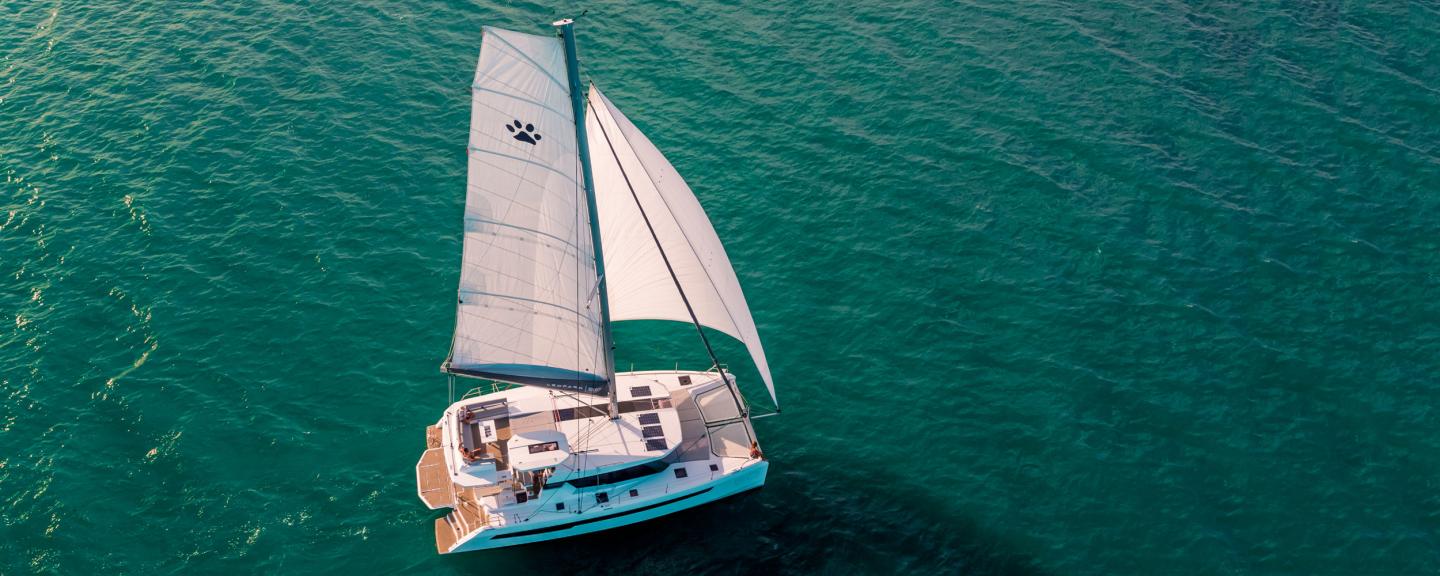
- Cabins: 4 or 5
- Heads: 4 to 6
- Berths: 6 to 12
- Showers: 4 to 6
SPECIAL OFFER


- LOA: 50 ft 6 in / 15.4 m
- LWL: 48 ft 11 in / 14.9 m
- Beam: 26 ft 5 in / 8.04 m
- Draft: 5 ft 3 in / 1.61 m
- Mast Height: 77 ft 2 in / 23.52 m
- Bridgedeck Clearance: 3 ft 5 in / 1.03 m
- Engine: 2x 57 hp
- Propeller Dimensions: 3‐blade 18in x 14in
- Engine No. Cylinders: 4
- Fuel: 243 gal / 920 L
EXTRA DETAILS
- Bunk Dimensions: View Leopard Range Bunk Dimensions
- Headroom: View Leopard Range Headroom Dimensions
- Water: 185 gal / 700 L
- Mainsail Area (Standard): 964 sqft / 89.6 sqm
- Mainsail Area (Square Top): 1019 sqft / 94.7 sqm
- Genoa Area: 688 sqft / 63.9 sqm
- Spinnaker Area: 204 sqft / 2199 sqm
- Code 0 Area: 970 sqft / 90.1 sqm
- Code D Area: 1690 sqft / 157 sqm
- Total Upwind Area (Standard): 1652 sqft / 153.5 sqm
- Polars: View Leopard 50 Performance Documents
- Displacement: 41888 lbs / 19000 kg
- Load Carrying Capacity: 15432 lbs / 7000 kg
- Holding Tank Capacity: 45 gal / 170 L
DOWNLOAD BROCHURE
Related Boat Reviews
Leopard catamarans feature - passagemaker, leopard 50: a most hospitable boat, leopard 50 review by multihulls world, related blog posts, lifetime partners in work and play: kevin and elizabeth's owner profile, product profile: leopard 50, owner reveal and test sail of the leopard 50p.
Make an appointment for a boat show, a sea trial, or simply receive a phone call from our expert agents.
Other Leopard 50 Buying Options
Check for current availability of used Leopard Catamarans and new Leopard Catamarans in charter programs on our sister sites
THE 10 BEST Moscow Boat Rides & Cruises
Boat rides & cruises in moscow.
- Boat Rentals
- Scuba & Snorkeling
- Fishing Charters & Tours
- Water Sports
- Stand-Up Paddleboarding
- Surfing, Windsurfing & Kitesurfing
- Kayaking & Canoeing
- Waterskiing & Jetskiing
- Parasailing & Paragliding
- River Rafting & Tubing
- Dolphin & Whale Watching
- Speed Boats Tours
- Submarine Tours
- 5.0 of 5 bubbles
- 4.0 of 5 bubbles & up
- 3.0 of 5 bubbles & up
- 2.0 of 5 bubbles & up
- 3rd Transport Ring (TTK)
- District Central (TsAO)
- Garden Ring
- District Northern (SAO)
- Good for Big Groups
- Good for Couples
- Good for a Rainy Day
- Budget-friendly
- Good for Kids
- Hidden Gems
- Honeymoon spot
- Good for Adrenaline Seekers
- Adventurous
- Things to do ranked using Tripadvisor data including reviews, ratings, photos, and popularity.
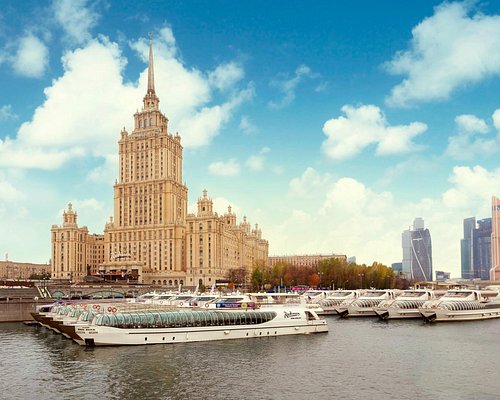
1. Flotilla Radisson Royal

2. Moscow River Boat Tours

3. Sup-Club

4. Akvanavt Diving Centre

5. Diving Center Crocus City Oceanarium

6. CheapRussia Tours
7. Kite School Kiteclass

8. SUP Center
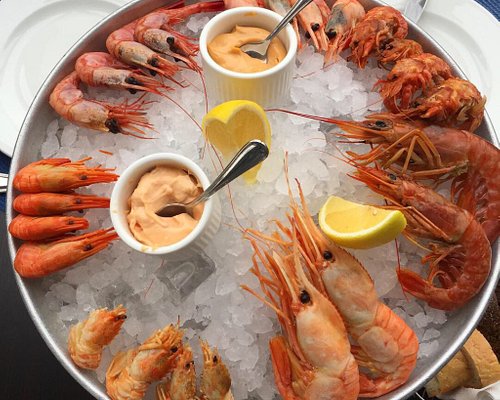
9. Erwin. Reka
11. Easy Russia Tour Guide
12. Lovely Russia Tours

13. Capital River Boat Tours - Moscow Centre

14. Alfa Centr
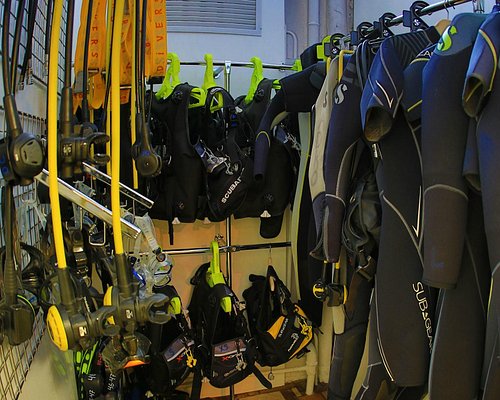
15. Diving Club Divers
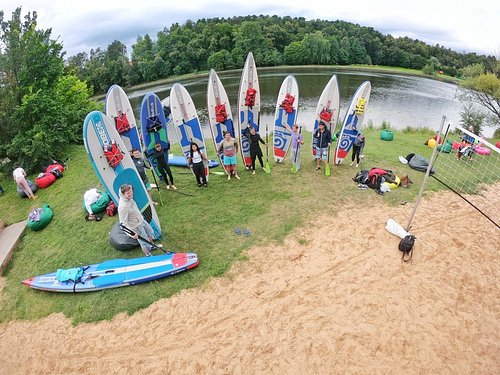

16. Sup Outdoor

17. MORE MOSCOW
19. Soho Sailing Style
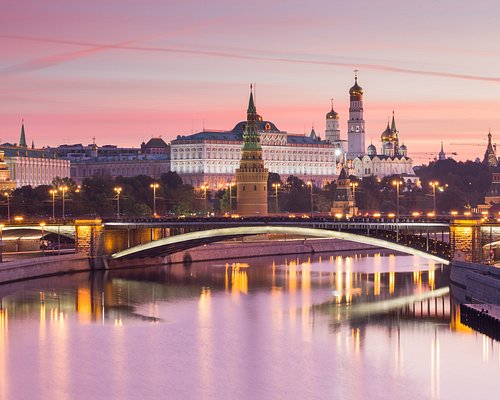
20. Mosparokhodstvo
21. Diving Center Crocodile

22. Dive-Project

24. Kosinskiy Children Marine Club

25. Kayak Moscow
26. DIVECLUB CHE

27. FLOW Moscow

28. Moswake

29. Morskiye Volki

30. S-cruises
What travelers are saying

- CheapRussia Tours
- Easy Russia Tour Guide
- Lovely Russia Tours
- MORE MOSCOW
- Insider Moscow Tours
- Flotilla Radisson Royal
- Moscow River Boat Tours
- Capital River Boat Tours - Moscow Centre
- Diving Center Crocus City Oceanarium
- Boat Reviews
- Press Releases

Delivery Skipper's Report: Indian Ocean Crossing on a Leopard 44
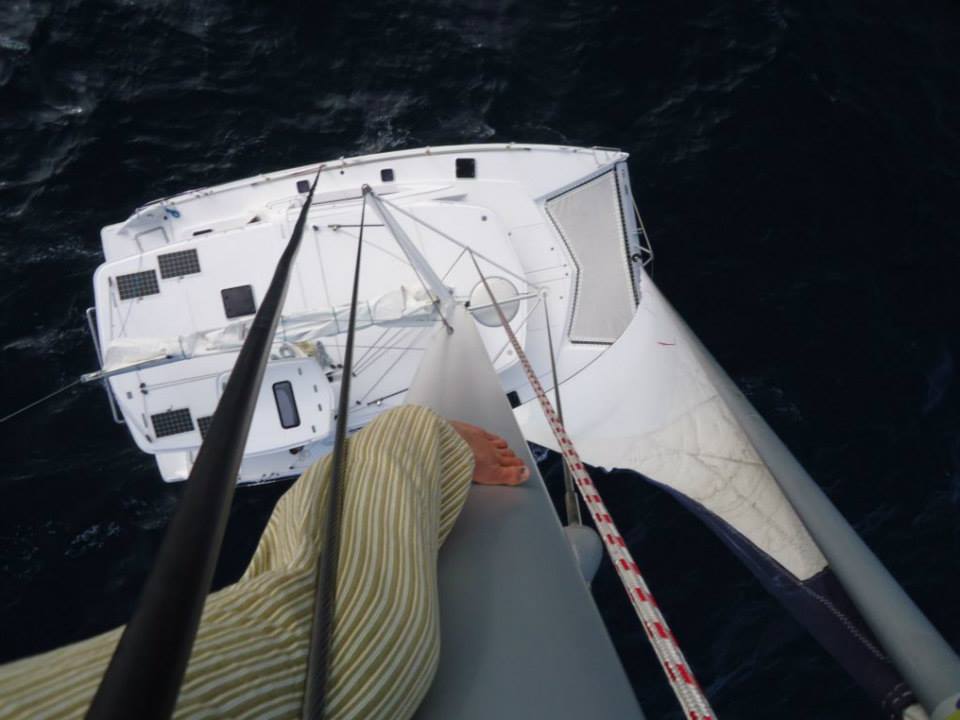
Earlier this month, skipper Kirsten N. tied up to a dock in Australia after 56 days at sea. She had just completed her task of safely delivering a Leopard 44 from Robertson & Caine's factory in South Africa to the boat's buyer in Sydney. Consider this: 56 days means Kirsten and her crew spent about 15% of 2013 on this one job!
Kirsten gives us a good look into life at sea in this Q&A session about the delivery.
Q: How many crew did you have aboard?
A: 2 crew, and myself – total of 3 persons aboard.
Q: What kind of watch schedule did you maintain?
A: 4 hours in the day (makes up 3 watches between 0800 and 2000 – 1 per person) and 3 hours at night (means the person on watch from 2000 – 2300 is on watch again from 0500-0800, and that way the watches are staggered).
Q: How do you pass the time during nearly two months at sea?
A: Cleanliness of the boat – keeping it clean and salt-free and general checks at sea, engine maintenance etc. takes up a couple of hours each day – then the domestic duties taken in turn – such as cooking/doing the dishes - the watches, of course, and general sailing, which often requires sail changes etc., studying the weather and the charts – and for the rest, reading plenty of books, playing cards, philosophizing with the ship’s mates, taking a swim around the boat on a calm day, getting enough sleep and rest to be in healthy shape.
Q: What was your diet like aboard?
A: Basic starches, such as rice, pasta, couscous, potatoes with certain vegetables that last long like carrots, pumpkin, onions, garlic, ginger, leek, cabbage, chilies, dried lentils, nuts, dried fruits. Some things for the first couple of weeks that last well in fridge: tomatoes, green peppers, cheeses, yoghurts. Then in tins: vegetables, crushed tomatoes, beans. From this we made stews, curries, etc. Breakfast: teas, ground coffee, cereals, milk. Other crisp breads, peanut butter, spreads, salty cracks, processed cheeses, pickles, fruit juices etc. And our first mate did a fine job, making sure we had a good supply of fresh fish: skipjack and long-fin tuna.
Q: How did the boat handle?
A: The boat took the seas really well. With each approaching depression, we would get strong Northwesterlies: we would fall off with the wind and take the seas and winds on the quarter and go further South, until the wind would back round to the Southwest, and we would head back to North on the other tack, still keeping the weather on the quarter. This would allow the boat to run with only the genoa, which meant that the sail was easy and safe to reef, but allowed for good progress, none the less. The auto-pilot steered the boat with ease, and the helm was balanced. Even when the boat took occasional big beam seas, it felt stable.
Q: Did you have to make any repairs underway?
A: No repairs were needed underway. I climbed up the mast once while we were becalmed, to check the rig – forestay and cap-shrouds – and found everything to be as it should. We tightened up slightly on the cap shrouds. In very strong winds, we would tag down tightly the genoa with the lazy sheet on the weather amidships cleat, and tightened up on the topping lift and then main sheet (even without the main being hoisted) to give the rig additional “backstay” support, and we experienced NO breakage.
Q: What were the highest wind speeds and wave heights that you saw? What was the prevailing wind direction?
A: We had true wind speeds gusting into the lower 70s, but between 50-60 was frequent, from NW’lies to SW’lies, hence we would keep the weather on the quarter, and keep apparent wind speeds down. But usually the depressions would not last for more than 24 hours, so the seas would only pick up to 5-7 m, mostly a more or less comfortable, long period swell, which would push the boat along nicely, giving us some surf speeds up to 18 knots on the odd occasion. After the passing of a depression we would sometimes be becalmed slightly for a day or two, giving the sea a good chance to subside again.
Q: What kind of air temperatures did you experience?
A: About 12-17 °C , high humidity and lots of rain.
Q: How much fuel did you use?
A: We used about 600-700 litres total.
Q: What did you see? Any notable encounters with other boats, fish, birds, etc.?
A: Endless amounts of albatross, black boobies and other sea-birds. We had our encounters with the fish we hauled in on the line and made dinner out of. We saw dolphins off the coastlines (SA and AUS), we saw seals off St. Paul and wales in Oberon Bay and off Jervis Bay. We saw some small fishing boats between St. Paul and AUS, with bright lights like calamari boats – often just drifting, but other than that it was a very desolate stretch – we saw very, very few cargo ships and went for weeks without seeing anything at all.
Q: Anything else about the trip you want to share?
A: On a whole, a very cold, rainy stretch. Sea temp between 14-16 °C made for cold swims around the boat on a windless day, and cold dragging behind the boat for a salty “shower”. There were some sea-mounts along the crossing – shallow areas, which we did make sure to avoid, but even passing 40 miles of them, a change of motion could be felt. We caught a good glimpse of the volcanic crater of St. Paul – a rare and beautiful sight – and a privilege, that the Leopard 44 carried us all the way there and safely across the ocean. On a whole, we were lucky with weather, the Indian can be a lot more treacherous, but I had good confidence at all times in the solidity and capabilities of the Leopard 44.
The Leopard Catamarans facebook page has an album of Kirsten's photos from the delivery.

Topics: Deliveries , Leopard 44

Daniela Clark
Subscribe here.
Moscow Boat Tour
- Page active

Description
See all the gems of historical and cultural center of the capital in short time and without traffic jams or tiresome walking.
Depending on the itinerary and duration of the Moscow River boat trip, the tour can be 3 or 5 hours.
Highlights of the tour
- St Basil’s Cathedral;
- Stalin skyscraper on Kotelnicheskaya (Tinkers) embankment;
- The Kremlin;
- “House on the Embankment” Stalin skyscraper;
- Monument to Peter I;
- The Central House of Artists;
- Christ the Savior Cathedral;
- Gorky Park;
- Moscow State University;
- Russian Academy of Sciences;
- Luzhniki stadium;
- Novodevichy Monastery;
- Kiev railway station;
- Europe Square;
- Moscow City Hall;
- Government House;
- Expocentre Exhibition Complex;
- and other famous sights.
You will learn about the different epochs of the city from the foundation in 1147 till Soviet times of 20 th century.
Moscow River
Moskva river has the form of a snake and is the main waterway of Moscow, consisting of a cascade of reservoirs. Within the city, Moskva river is 80 km long, 120 m - 200 m wide and up to 14 m deep. The narrowest part of the river is the Kremlin area in the city center, and the most extensive is around the Luzhniki Stadium in the south.
Bridges in Moscow
Undoubtedly, bridges and embankments are among the most scenic spots and main attractions of Moscow. Plus, they are so romantic.
- Bolshoy Kamenny Bridge – Great Stone Bridge – is the main bridge of Moscow . The first stone bridge was constructed here in the 17th century.
- Patriarshy Bridge is one of the youngest pedestrian bridges, built in 2004. The bridge connects the iconic Christ the Saviour Cathedral with funky Bersenevskaya embankment, extremely popular place among locals for its trendy art galleries, cafes and panoramic views. Patriarshy Bridge used to be a shooting location for ex-Russian President Dmitry Medvedev's New Year speech to the nation.
- Borodinsky Bridge, erected in honor of the 100th anniversary of the glorious victory in the Battle of Borodino (which every Russian kid knows about), a fierce legendary battle during the Russo-French war of 1812.
- Bagration Bridge one of the pedestrian bridges with most picturesque views of the Moskva River with its numerous upper-level observation platforms. The bridge was erected to celebrate the 850th anniversary of Moscow city in 1997.
- Krymsky Bridge used to be in Top 5 Europe’s longest bridges some 100 years ago. The bridge got its name after the ancient Krymsky ford which Crimean Tartars used to invade Moscow in the 16 th century.
Embankments of Moscow
Moscow river boats 37 embankments, the most popular being Kremlevskaya, Sofiyskaya, Pushkinskaya, Vorobyovskaya and Kolomenskaya.
You can get the most spectacular views of the Kremlin from Kremlevskaya and Sofiyskaya embankments.
- Pushkinkaya embankment is the most romantic in Moscow. It meanders along Gorky Park and Neskuchnyi garden and is rich for all kinds of entertainment as well as cozy nooks, including Olivkovy beach, the famous Zeleny theater as well as a pier for river cruisers.
- Vorobyevskaya embankment is part of Sparrow Hills nature reserve. This place opens a beautiful panorama of the river and city from the observation deck and is considered to be the place for taking serious decisions in life.
- Embankment in Kolomenskoye Museum-Reserve has a special charm due to its peculiar geographical relief. The boat trip around Kolomenskoye would be the most peaceful in your life.
- Taras Shevchenko embankment is popular among photographers for its modern Moscow City skyscrapers. Highly recommended for your night boat trip.
- Embankments of Moscow are the pride of the capital. A distinctive feature of each of the promenades is its architecture and beautiful views. In addition, almost all the embankments of Moscow have a rich history and a lot of notable buildings.
Different epochs
Taking a walk along the Moskva River by boat, you will witness the architecture of Moscow from different eras and styles. Archaeological studies indicate that already in the XI century there stood a fortified settlement on Borovitsky hill, which is now called the Kremlin. Little fortress could not accommodate all the residents of the rapidly growing city, and the Grand Duke ordered the construction of a new Kremlin, larger than the former.
Boat trip around Kolomenskoe Park
Moscow river boat trip starts from the pier Klenovy (Maple) Boulevard and provides reat views of Nicholas Perervinsky monastery.
Nicholas Perervinsky monastery was founded at the time of the Battle of Kulikov (1380). The monastery, got its name from the surrounding area – “Pererva”, which can be translated like “tear off” and because of the location – here it abruptly changed its course, turning to Kolomna, standing on the opposite bank.
Nowadays Kolomenskoye is State Art, Historical, Architectural and Natural Landscape Museum-Reserve, which doors are open to everyone who wants to get in touch with the ancient history of Russia.
Take a break from the big city hustle in the shady parks and gardens of the Kolomenskoe Museum-Reserve. Don’t miss a wonderful Church of the Ascension and Tsar Alexey’s Palace in Kolomenskoye!
Monasteries and temples
- Novospassky Monastery
- Founded in the 13th century on the site where now is located the Danilovsky monastery. After a few decades, in 1330, Ivan Kalita moved the monastery onto the Borovitskii hill of the Kremlin. However, in the 15th century, Spassky Monastery again moved, this time to a more spacious place on Krasnoholmskaya waterfront.
- Church of St. Nicholas in Zayaitskom
- Erected in the middle of the XVIII century in baroque style. The building survived after the 1812 fire, but the utensils were destoyed. Parishioners collected donations and restored the temple on their own. In Soviet times, it was closed and re-opened only in 1992.
- Cathedral of Christ the Savior
- The church was originally erected in honor of the victory over Napoleon and was being under construction for long 44 years. Notoriously demolished in 1937 to be a giant swimming pool under open sky. The current building was constructed in 1990s. It is the tallest and one of the largest Orthodox churches in the world.
- The temple was built in 1679-82, during the reign of Tsar Fedor Alekseevich, in late Muscovite Baroque style and can be characterized as bonfire temple. Each gable is a symbol of a heavenly fire.
- Novodevichy Convent
- The most famous concent and monastery in Moscow, presumably founded in 1524. Novodevichy’s status has always been high among other monasteries, it was in this monastery where the women of the royal blood, the wives of Tsars and local rulers of Moscow were kept in prison as nuns.
- St. Andrew’s church (male acts as Compound Patriarch of Moscow)
- St. Andrew’s church stands right on the slopes of the Sparrow Hills, on the way down to the Moskva River, on the territory of the Nature Reserve “Sparrow Hills”. The monastery is small in size but is very cozy. It’s situated in a quiet courtyard surrounded by temples, fruit trees and flowers.
What you get:
- + A friend in Moscow.
- + Private & customized Moscow river cruise.
- + An exciting pastime, not just boring history lessons.
- + An authentic experience of local life.
- + Flexibility: changes can be made at any time to suit individual preferences.
- + Amazing deals for breakfast, lunch, and dinner in the very best cafes & restaurants. Discounts on weekdays (Mon-Fri).
- + A photo session amongst spectacular Moscow scenery that can be treasured for a lifetime.
- + Good value for souvenirs, taxis, and hotels.
- + Expert advice on what to do, where to go, and how to make the most of your time in Moscow.
Write your review

IMAGES
VIDEO
COMMENTS
We sailed through the Atlantic Ocean from Hampton, VA in the Chesapeake to the British Virgin Islands in the Caribbean on our Leopard 45 Sailing Catamaran. W...
A new Leopard 46 Powercat needed delivery from the Robertson & Caine yard in South Africa to a buyer in Brazil, and an ocean lay in the way. Captain Kodja started planning and, ten months later, set out for a month-long, 4,453 nautical mile (nm) trek across the South Atlantic with three crew. Delivering a power yacht has similarities and ...
On board, family ocean crossings at an average of 10 knots are the norm. Best bluewater multihulls for family cruising. Photo: Nicolas Claris. ... Leopard 45. Leopard Catamarans, together with ...
Preparations and planning is months in the making. Outfitting your yacht, choosing the right crew and provisioning are a few examples of preparations that must be thoroughly thought through. Well first things first, you need a boat. "The day we decided to quit our jobs, live aboard a boat and cruise around the world, Lori said she would only do ...
Eel provided us with an image which shows the Leopard 40 sailing at 13 knots. Eel also shared that at one point during the crossing they endured 40 knots of wind in 20 foot seas! "After crossing the Atlantic, my definition of rough has changed. We were able to cover about 150 miles per day, give or take. We have a satellite so I am able to ...
Join our Patreon : patreon.com/BarefootDoctorsSailing - from $3/episodeJoin Barefoot Doctors Sailing as we move into Day 2 of the storm with fluctuant winds ...
Multihulls are making their mark on tradewinds sailing. Elaine Bunting reports from the 2019 Atlantic Rally for Cruisers. A catamaran on the ARC rally reefed for an approaching squall, as seen ...
At a cruise speed of 17.2 knots at 3000 rpm, it sipped just 9.4 gph total, and fuel use only increased to 16 gph at WOT. Leopard estimates the yacht's maximum range as an astounding 2,000 miles with 581 gallons on board. Leopard 53 Powercat. The company's all-new design for the 53 PC made it a great platform for our quick jaunt to the Bahamas.
Only brand with over 8 million Nautical miles of ocean crossings. Robust construction; Well balanced motion even in heavy weather; Safe and robust rig equipped with double shrouds; ... Leopard Catamarans is part of Travelopia Marine (The Moorings, Sunsail, Leopard Catamarans) and Travelopia Group, owned by KKR, one of the largest private equity ...
On the Swan 47, we usually do daily runs of 150+nm. Best run on an Atlantic crossing was 186nm. Leopard was also fast downwind but close reach, it was not comfortable and struggling. Hard to comment on the daily run as there was a lot of motoring on the Leopard. 2.
It is the thrill of the unknown. Anything could go wrong, but everything could go right.<!--more--></p><p>Now picture this, completing an Atlantic crossing on a boat model that has never made this passage. If you are the captain of this vessel, wouldn't that make you a pioneer? Captain Mike has been delivering Leopard Catamarans for years.
One of the best catamarans for ocean sailing in 2020 is The Privilege 435. This is a long-distance, light weight cruiser produced in the Gold Coast area of La Rochelle. The Privilege 435 is a heavy-displacement multihull that has been around for almost 30 years. This is a luxurious well-built yacht with a decent proportion that allows it to ...
Our friends thought we were crazy to do an ocean crossing. But we thought it was better to start with the hard stuff. The experience of crossing the Atlantic was amazing, and now that we have done it, I can tell you that coastal navigation is much more difficult." ... Leopard Catamarans. 93 N Park Place Blvd, Clearwater, Florida 33759
Boat Review: Leopard 42. Sticking with its proven design formula, but also cherry-picking popular features from its recent models, Leopard Catamarans has launched a "best of" package with this new boat that sold nearly 30 units before hull #1 even touched water. Like a greatest hits album, the Leopard 42 combines the best of its 40ft and ...
The Leopard Identity. Leopard Catamarans pushes the boundaries of catamaran design. Evolving from 50 years of customer feedback, Leopard Catamarans has pooled their expertise with builders Robertson and Caine to design today's Leopard range: spacious, robust, performance-driven blue water cruising catamarans. As the worldwide distributor, we ...
After the Atlantic, the Caribbean was like sailing on a lake with winds abaft the beam and boat speeds of about 5 to 6 knots (even with a fouled bottom). On reflection, the crossing was well worth the effort, sailing the Caribbean is truly wonderful and as we rest here in Grenada with Horizons ashore in Spice Island Marine receiving some TLC we ...
He had no ocean experience, which didn't prevent him from going to transatlantic on the same 13.5-foot (albeit heavily modified) little boat he used in inland. The crossing was nonstop, in June-August 1965. At that time, Tinkerbelle was the shortest yacht to cross the Atlantic. Remember that Manry was a newspaper editor by profession and had ...
28 Oct, 2013. A good skipper and a good boat are not phased by challenging conditions! Skipper Kenneth H. has 36 Atlantic crossings under his belt. He was more than prepared to take on the Southern Ocean, completing a Leopard 39 delivery from Cape Town to Brisbane in dramatic conditions without any drama. The Leopard Australia team was on the ...
Live out your sailing dreams aboard the Leopard 50. This catamaran is everything you envisioned, plus so much more. With a never-before-seen lounging flybridge of this size, the Leopard 50 incorporates the best attributes from its predecessor and 2012 Boat of the Year, the Leopard 48. Now, with even more living space and options, your journey ahead is boundless.
Explore the scenic and historic attractions of Moscow from the water with the best boat tours and cruises. Enjoy the views of the Kremlin, the Cathedral of Christ the Savior, and the Sparrow Hills on a relaxing or informative boat ride. Or, spice up your trip with some water sports and activities in Moscow. Find out more on Tripadvisor.
Amended and Restated Legacy Crossing Urban Renewal District Redevelopment Plan October 1, 2018 City Council Resolution 2007-24 Adopted September 17, 2007 City Council Resolution 2008-05 Adopted February 19, 2008 Urban Renewal Agency Approval Approved March 6, 2008 City Council Ordinance No. 2008-10 Adopted June 2, 2008
The Leopard Catamarans facebook page has an album of Kirsten's photos from the delivery. Kirsten N. is a native of South Africa and typically skippers at least two longer ocean-crossing deliveries each year, as well as a number a shorter coastal trips.
Moskva river has the form of a snake and is the main waterway of Moscow, consisting of a cascade of reservoirs. Within the city, Moskva river is 80 km long, 120 m - 200 m wide and up to 14 m deep. The narrowest part of the river is the Kremlin area in the city center, and the most extensive is around the Luzhniki Stadium in the south.